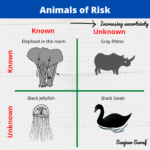I recently came across a report from European Gas Pipeline Incident Data Group (EGIG) titled “Safety Performance Determines The Acceptability of Cross Country Gas Transmission Systems”. The paper presents incident data contributed by six European gas transmission operators over a 30-year period of 1970-2001.
An incident within this failure database implies unintentional release of gas and a release is classified in one of the three categories:
- Pinhole crack – diameter of leak is 2-cm or less
- Holes -leak diameter greater than 2-cm but less than pipe diameter
- Ruptures – diameter of leak is pipeline diameter
According to the report, the main causes for pipeline releases are:
- External interference: Activities such as digging, pipling, ground works, excavation, ploughing, slabbing, casing and sleeves may damage the pipeline.
- Corrosion: It can be external or internal
- Material failure: Due to construction of material, defect specification
- Ground movement: dike break, erosion, flood, landslide, mining
Relative percentage of incidents based on incident cause is presented in table below – 50% of the pipeline releases appear to be caused by external interference. Furthermore, when a pipeline is damaged by external interference there is a 75% chance that it will lead to a hole or a guillotine rupture.
Initiating Events Leading to Pipeline Incidents
| Initiating Event | % |
|---|---|
| External interference | 50 |
| Construction defect | 17 |
| Corossion | 15 |
| Ground movement | 7 |
| Hot-tap error | 5 |
| Others | 6 |
Of the corrosion incidents reported, 79% are caused by external corrosion. Furthermore, 74% of the external corrosion incidents were due to pitting.







One Response
thank you for your information. It will also be useful for the gas pipeline industry in developing country.